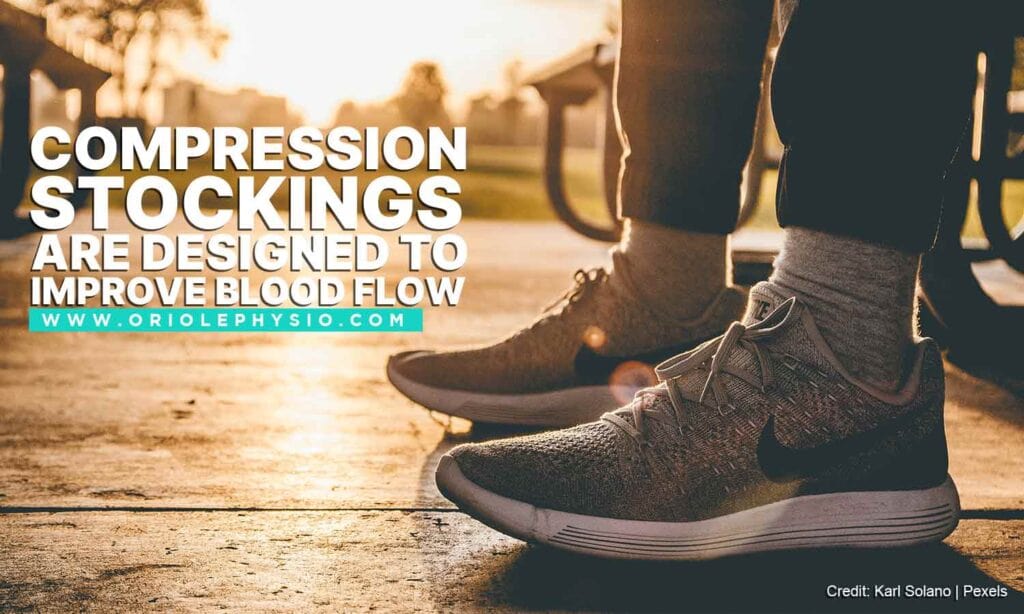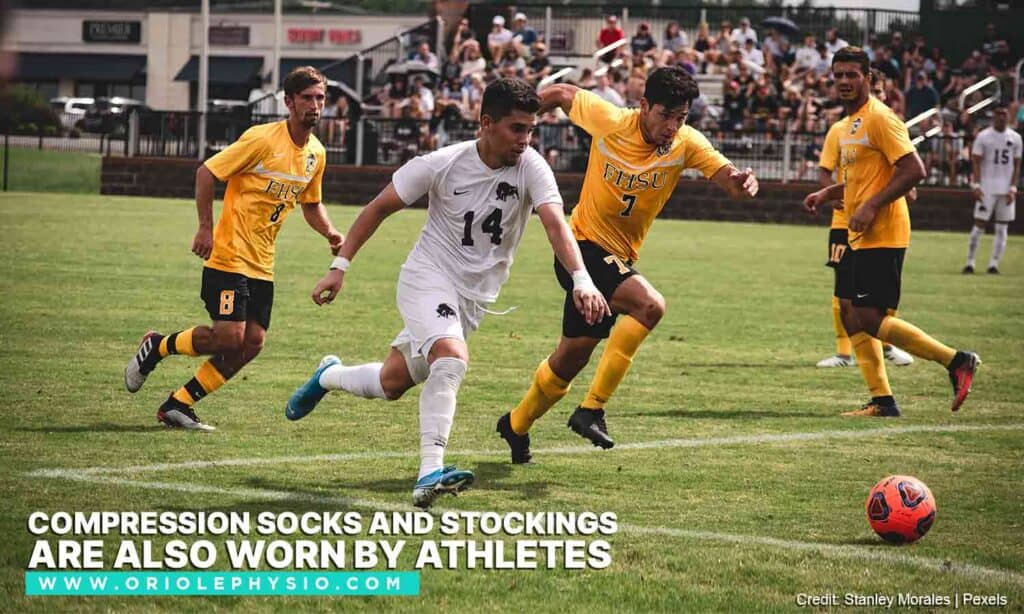Compression Stockings — Myths And Facts Revealed
Compression garments have been a great help in improving people’s health since their introduction in the 1950s. However, despite the obvious benefits of compression socks and stockings, they have been a subject of several misconceptions (and sometimes jokes) over the years that have deterred people from wearing them, especially the young.
If you are still hesitating to get compression stockings because of these so-called myths, then it’s about time that you are enlightened with the facts. Misconceptions about these medical socks have gone on for far too long, so it’s about time that they are debunked.
What Are Compression Stockings?

Compression stockings or socks are specially designed for compression therapy. They are close-fitting, stretchy garments that wrap snugly around your legs in order to increase the circulation of blood.
So how does a compression sock work? When worn, it applies gentle pressure to your legs and ankles, promoting the flow of oxygen-rich blood from the veins in your leg to your heart.
You might be wondering how long to wear compression socks. If they have been prescribed to you by your doctor, then you may need to wear them for several years at least. In some cases, the rest of your life.
8 Compression Stocking Myths

There’s quite a number of misconceptions surrounding compression socks ranging from aesthetics to functionality. Be wary whenever someone mentions any of the myths below; it’s either they have no idea what compression socks are or are just a person with misplaced skepticism.
1.Compression socks are only worn by grandmothers

This is one of the most common misconceptions regarding compression socks. For a substantial number of people, it’s difficult to separate the image of compression stockings from the elderly since this age group is usually at risk with circulation problems such as deep vein thrombosis (DVT), diabetes, and varicose veins.
While old people can certainly benefit from compression stockings to help with their ailments, that doesn’t mean they are the only ones who use them. Pressure stockings are also used by other people to deal with temporary blood circulation problems like:
- Athletes and those who do intense exercise
- Pregnant women
- Employees who spend their working hours standing up
- Patients who just came out of surgery.
- Pilots who spend most of their time on long-haul flights
2.All compression stockings require a doctor’s prescription
There is no law that requires you to have a prescription in order to purchase compression stockings over the counter. You can easily acquire socks with relatively low compression levels (around 15-20 mmHg) from drugstores, online shops and medical supply stores.
However, a significant number of pharmacies will refuse to dispense higher level compression stockings without a doctor’s prescription. High-level compression garments range from 20-30 mmHg to 30-40 mmHg and are generally safe to wear, but there are certain individuals that may be at risk due to contraindication.
Certain compression levels deal with specific medical conditions, so it is highly recommended that you consult with a physician to determine what level is right for you.
- 30-40 mmHg (Extra Firm)
- Used in treating phlebitis
- Helps in healing active venous stasis ulcers
- Provides relief from moderate and severe edema and lymphedema
- Used in treating DVT and post-thrombotic syndrome
- Used by patients after orthopedic and bone fractures surgeries
- Helps in treating skin changes from healed ulceration
- Provides relief and prevents more serious cases of varicose veins
- 20-30 mmHg (Firm)
- Used to help treat postural hypotension
- Helps in the treatment of varicose veins
- Helps in the treatment of minor to moderate medical conditions
- Used to help treat painful, heavily fatigued legs
- Provides relief from swelling associated with mild edema
- Used in conjunction with surgical procedures such as phlebectomy sclerotherapy
- 15-20 mmHg (Moderate)
- Provides extra support for busy days and travelling
- Provides slightly more support to relieve aches from heavy, moderately swollen legs
- Prevents varicose and spider veins during pregnancy
- Provides enhanced blood circulation, especially in the legs
- 8-15 mmHg (Light or Mild)
- For mild aches and tired legs
- Provides support to help boost energy and health
- Provides comfort and support for sitting or standing for long periods
3.Compression stockings are a pain to put on
This misconception might have come from old compression garments being quite difficult to put on. However, the latest advancements in technology have made vast improvements in the design of medical stockings. Modern varieties also make use of more flexible materials such as nylon, cotton, spandex, and natural rubber. These make modern compression stockings more user-friendly compared to their older iterations.
If you’re still having trouble putting them on, here a couple of tips:
- Compression stockings are the easiest to put on in the morning when you get out of bed since legs are less swollen or inflamed during this time of day.
- Putting lotion on your legs or baby powder on your calves will make it easier for the compression stockings to slide up, especially for those people with dry skin or when the weather is particularly dry
- Wearing rubber gloves can make it easier to grip the stockings.
4.Compression socks cut-off blood circulation
This is considered false since compression garments are specifically made to increase blood circulation and not prevent it. However, wearing them incorrectly can interfere with the pressure being applied and reduce the rate of blood being circulated.
This is considered false since compression garments are specifically made to increase blood circulation and not prevent it. However, wearing them incorrectly can interfere with the pressure being applied and reduce the rate of blood being circulated.
In order to prevent this, here are a few tips on how to wear compression stockings properly for optimum pressure:
- Check your stockings from time to time for any wrinkles and smooth them out.
- Make sure that the compression stockings feel tight around your ankles, with the pressure slowly diminishing up your calves.
- Do not fold or roll the tops down because this will make them tighter and reduce blood circulation.
5.Compression socks and stockings are unattractive

This is no longer true. The advancements in compression garment technology not only allowed them to be more functional and easier to wear but also provided opportunities for more aesthetic improvements. Pressure garments now come in a variety of styles and patterns that suit your fashion needs.
6.Compression garments aren’t suitable for the summer months
People tend to wear thinner, more breathable clothing during the summer because of the extreme temperature. So for most skeptics, they believe wearing compression socks or stockings during this season will just make you feel uncomfortable.
However, modern compression socks are quite breathable. They’re made with special fibres designed to wick away sweat and keep you feeling cool and dry. Furthermore, they also prevent swelling, which is a common medical condition during the summer, especially for those with active lifestyles.
7.Compression stockings are expensive

You might be asking the question, “How should compression socks fit with my budget?” After all, these are labelled as “medical equipment”, so it’s only natural that they’re expensive, right? That may be the case with these kinds of garments in the past, but it’s certainly not the case now.
With the rise of new manufacturers and physiotherapy centres offering compression socks, competition is at an all-time high. This is quite beneficial on the part of the consumer since you get better quality pressure socks with lower prices than ever before.
8.Compression stockings can get rid of varicose veins
A substantial number of people believe that compression stockings are the miracle cure for varicose veins. Unfortunately, this is nothing more than a myth. While compression stocking can indeed increase blood circulation that helps slow down the development of varicose veins, they cannot get rid of the existing ones.
It’s always good to be careful of what people say about things, especially those related to health. There are a substantial number of compression sock benefits that can help improve your health, so listening to misconceptions will only deprive you of that privilege. Remember to do proper research whenever you are faced with sketchy information.
If you are in need of good quality compression socks in the North York area, call Oriole Physiotherapy & Rehabilitation Centre at (416) 221-0772. We’ll be happy to provide you with the right kind of compression garment that suits your needs.

